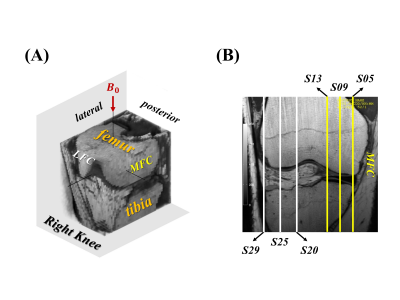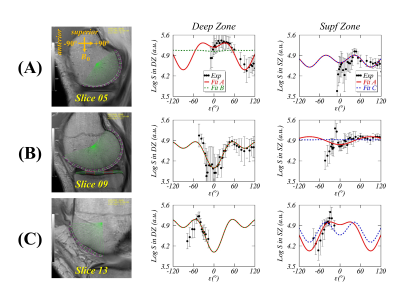Yuxi Pang1
1Dept. of Radiology, University of Michigan, Ann Arbor, MI, United States
1Dept. of Radiology, University of Michigan, Ann Arbor, MI, United States
A generalized magic angle effect function can better characterize orientation-dependent T2W signals in clinical MR imaging of the human knee articular cartilage.

FIGURE 2. A volume-rendered high-resolution 3D right knee
image (A) and a coronal image (B) showing the locations of three sagittal slices (white lines) from lateral femoral condyle and of three sagittal slices (yellow lines) from medial femoral condyle .

FIGURE 3. Three imaging Slices 05 (A), 09 (B) and 13 (C) from medial knee cartilage (the 1st column), superimposed
with segmented ROIs, from which the measured (black circles) average T2W
signal intensities were modeled using Fit A (solid red lines) and Fit B (dashed
green lines) in the deep zone (the 2nd column), and using Fit A and
Fit C (dashed blue lines) in the superficial zone (the 3rd column).